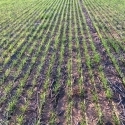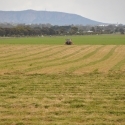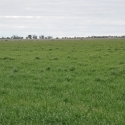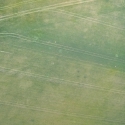05 Apr 2017
Crop residue burning and the loss of nutrients from fertilizers
Fate of topdressed fertilizers when stubbles are burned.

The retention of crop residues is now one of the cornerstones of current farming systems. Residues help protect the soil from wind and water erosion, keep the soil cool so as to preserve precious water, and also help cycling of nutrients. Heavy and tangled stubbles can create problems at seeding, provide habitats for pests and diseases and present problems with pre-emergence herbicides. As a result, there may be a need to burn crop residues., and burning may be an option.
However, when residues are burned, up to 80% of the N and S contained in the stubble is lost, and around 40% of the P and K. So, there is a loss of nutrients and the soil is left bare, and so presents an erosion risk until seeding.
A late decision about burning or an accidental fire may mean that fertilizers or soil amendment agents have been top-dressed onto the stubble and this can reduce the effectiveness of the materials. The amount of loss will depend on the temperature at which these materials decompose - usually to volatile oxides and the temperature achieved in the burn.
Temperatures in residue fires
Scott et al. (2010) indicated that stubble fires will peak at >250oC and the bed of the fire is >150oC. The duration of exposure is usually short (<5 minutes) but if there are heavy stubbles or windrows the temperatures may persist for longer
Fertilizer Decomposition
• Single (SSP) and Triple superphosphate (TSP) heated at levels expected in a fire is reported to loose some solubility. At high temperatures (300oC for 5 minutes) there was a 20% decline in P solubility (citrate+water) for SSP and 75% decline in TSP. This led to a 15% decline in maize growth in the heated SSP but no decline in the heated TSP. The effects of heating on SSP and TSP on subsequent crop growth from the IPNI Brazil program are shown below:
see IPNI-Impact–105–BRA-85 (available below)
• Ammonium sulfate - decomposes at 235-280oC to sulfur dioxide and ammonia or nitrous oxides. Ammonia losses start at 100oC and both sulfur and nitrogen are lost.
• Urea melts at 130oC and converts to ammonia and is lost.
• Mono-ammonium phosphate/Di-ammonium phosphate – the first ammonium molecule will be driven off at about 100oC, and the second at about 130oC and the phosphates may become a little less soluble similar to TSP.
• Potassium Chloride (muriate of potash) - decomposes at 1400oC - unlikely to be lost in a stubble burn.
• Calcium sulfate dihydrate (gypsum) has a very high decomposition temperature (1400oC), but when it is heated to 100-150oC, water is driven off and the solubility of the progressively more anhydrous calcium sulfate (hemihydrate) is reduced. If heated above 250oC, the anhydrite calcium sulfate is formed that is not soluble unless very finely ground.
• Calcium carbonate (Lime) when burned converts (calcines) to calcium oxide (burned lime), which when wetted, becomes calcium hydroxide (slaked lime). Limestone and dolomite calcine at 650oC to 950oC depending on the crystal structure and the conditions under which the combustion occurs. So, it is unlikely that lime or dolomite will be affected by stubble burning. Southern Farming Systems has a useful note on liming and stubble burning (see below).
At normal stubble burning temperatures could have a small effect on SSP and a large effect on ammonium sulfate and urea, but muriate of potash would not be affected. Gypsum can become insoluble with a hot burn and phosphates become insoluble. Lime and dolomite are not likely to be affected.
If the fertilizer is drilled - even a centimeter or two into the soil - the insulating properties of the soil and the fact that heat moves up by convection quickly, means the fertilizer is not likely to be lost.
For Further Reading
• Robinson and Kirkby 2002. Maize stubble management survey, CSIRO Land and Water Technical Report 13/02.
• Scott et al. 2010. Stubble retention in cropping systems in southern Australia: Benefits and challenges. EH Graham Centre Monograph No. 1. 105pp. http://www.csu.edu.au/research/grahamcentre/research/publications/docs/stubble-retention.pdf
• Conyers, 2016 – Can I burn lime and gypsum with stubble? Crop Nutrition Extension Hub (available below).
Additional Resources
Fire does not reduce the nutrient value of P fertilizersSize: 4.29 MB
SFS on Lime and burning stubblesSize: 0.3 MB
ExtensionHub on lime and gypsum and burning stubbles.Size: 0.09 MB




